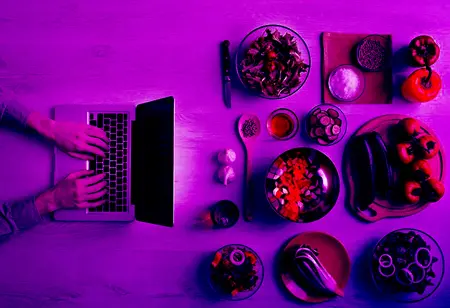Thank you for Subscribing to Food Business Review Weekly Brief
- Home
- Topics
- Alternative Proteins and Plant Based Food
- Beer and Wine
- Canned Beverages
- Coffee And Tea
- Food and Beverage Consulting
- Food and Beverage Financial Service
- Food And Beverages Marketing
- Food Distributors
- Food Ingredients
- Food Sustainability
- Plant Based Food and Beverages
- Seafood Suppliers
- Supplement Manufacturing
- Wine Investment
- News
- Vendor Viewpoint
- CXO Insights
- Conferences
- Newsletter
- CXO Awards
-
Planning a Marketing Strategy for Your Food Delivery Services
Customers relied more on food delivery services, either from the restaurants themselves or through third-party applications.

By
Food Business Review | Sunday, July 03, 2022
Stay ahead of the industry with exclusive feature stories on the top companies, expert insights and the latest news delivered straight to your inbox. Subscribe today.

Customers relied more on food delivery services, either from the restaurants themselves or through third-party applications, as a result of the COVID-19 epidemic and the lockdowns that lasted for the most of 2020. As a food delivery service, this offers a chance to grow its clientele.
Fremont, CA: Customers relied more on food delivery services, either from the restaurants themselves or through third-party applications, as a result of the COVID-19 epidemic and the lockdowns that lasted for the most of 2020. As a food delivery service, this offers a chance to grow its clientele. But simply making the business visible online or in app stores is not enough to develop a marketing strategy. Trends in logistics, the level of competition, and consumer preferences for delivery services must all be considered.
If you haven't previously created a marketing plan for your food delivery service, now is the ideal moment to do it if your restaurant hasn't fully embraced the demand from customers for meals to be delivered right to their door.
Analyzing the delivery cost offering vs. the possible profits
We will examine how to modify the business model to cover the costs so clients can earn from the new service before discussing how to sell it. Every sort of restaurant in the foodservice sector struggles to make a profit, from low-cost fast food joints to exclusive five-star hotels.
It requires careful preparation to add a service that has additional expenses of its own. After all, you want to see more revenue for your company. When done properly, providing a food delivery service can have such effect, and there is a lot of potential payoff.
How would you modernize your restaurant to allow for last-mile food delivery?
You undoubtedly made changes to your restaurant during the epidemic to employ social distancing for in-person dining in order to stay afloat. You may have already changed your business model to include delivery, curbside, and to-go services.
Imagine you had no planning or strategy in place when you began your food delivery service. If so, you still have time to invest in improving your company. As a result, your return will rise and you'll make more money from the service overall. The following are the steps taken to start:
1. Remodel your kitchen and foyer to cause the least amount of disruption to your dine-in customers. Set aside areas for delivery drivers and a prep and packing area for food deliveries as well as other delivery operations.
2. Take into account purchasing separate areas, commonly referred to as ghost kitchens or shadow kitchens, specifically for delivery orders.
3. Upgrade your website to include online delivery order functionality. Create a smartphone delivery app to make it simple and convenient for customers to order from your restaurant.
4. Employ one or more employees who are solely responsible for processing and packaging delivery orders. Regardless of the delivery service model you select or whether you decide to also open a ghost kitchen, carry out this action.
How to choose the best food delivery service model for your company?
Currently, you have a business plan and a strategy for modifying your current business to accommodate your new food delivery service. The delivery service model you plan to use must then be chosen.
1. Making use of third-party app
Restaurants must pay for these services. They generate income by charging customers a fee for each delivery, charging premium subscription fees, and withholding a portion of each delivery before paying your company.
2. Putting in place your own infrastructure and delivery service
You fully control the last-mile delivery process whether you decide to engage your own delivery personnel, lease or own a fleet of delivery vehicles, improve your website to support online ordering, and so on.
3. A hybrid method
Do you find the present labor shortages concerning? Do you want the ease of outsourcing some facets of your food delivery business to a third party while still having the freedom to own some of the processes? Then a hybrid solution might be the best choice for your company.
You might employ a mobile app and white-label online ordering platform along with one or more third-party collaborations. Orders would be collected from your restaurant or "ghost kitchen" by their vehicle, which would then deliver them to your customers.






